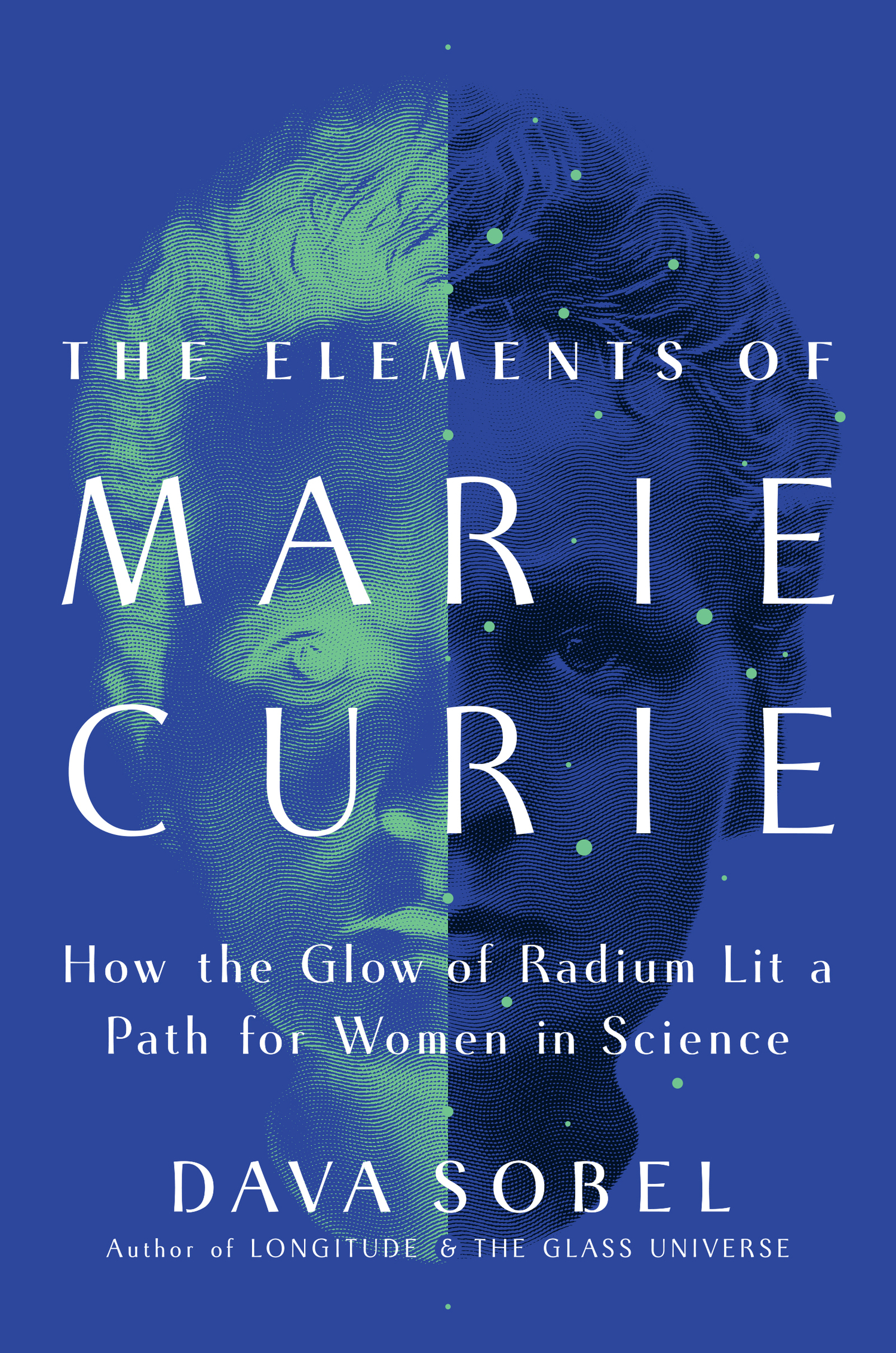
The ever-personable, award-winning science writer Dava Sobel immediately put her audience at ease at BookHampton on October 10 when she gave a talk about her latest book, “The Elements of Marie Curie: How the Glow of Radium Lit a Path for Women in Science.” A graduate of the Bronx High School of Science and an author, co-author, playwright and public relations liaison for PBS science series, she could boast having an asteroid in the main belt between Mars and Jupiter named for her — 30935davasobel — but modesty and humility are her style. You could see smiles and hear a sigh or two when she began by noting that she had a tutor to assist her in spots.
The book, chronologically structured and as accessible as science writing can be, can also be daunting in its explanations of chemistry and physics, particularly because so much of what Polish-born Marie Curie (1867-1934) explored was new in the air — radioactivity and x-rays, and because she was an imaginative and impeccable experimenter. (Annotated end notes, a glossary, a list of sources, an index and fascinating epigraphs invite attention.) The prompt to stay the course, however, is there in Sobel’s astounding opening line: “Even now, nearly a century after her death, Marie Curie remains the only female scientist whom most people can name.” The famous great scientists mural in the school lobby of Bronx High School of Science, she pointed out, features only one woman — Mme. Curie.
In her talk, Sobel exhibited a quiet confidence about her chosen profession as a professional science writer, which included years as a staff reporter for The New York Times Science News Department. She may have flitted around a bit about a major in college, but she was clear about not feeling herself to be the rejected girl student competing in a man’s world. As she has also written on a brief self-portrait online, she felt fortunate in school that “no one around me thought it odd or ill-fated for a girl to be interested in science.” In her acknowledgments she thanks the men in her life, family mainly, for encouraging her, a theme that runs through her book on Marie.
From an early age, “Manya” Curie had the enthusiastic support of loving parents and siblings. Later on, she attracted the respect of male scientists of her day, including Albert Einstein, Ernest Rutherford and, of course, Pierre Curie, who championed her presence at men-only ceremonies, societies, associations and universities. No one was more insistent on promoting and celebrating her than her research associate, her beloved Pierre Curie, and his accidental death in 1906 after being run over by a carriage in the street was a horror that she would never get over. She shared the 1903 Nobel Prize in Physics with him before going on to win the 1911 Nobel in Chemistry at the age of 44.
Though she worked tirelessly in an unheated shed, she was not withdrawn from passion. The supportive letters she received from Einstein during a time of scandal, for having a sensational affair as a widow with the married French physicist Paul Langevin, who had been a student of her husband, are particularly moving. She cared deeply, self-effacingly, for those who came to her lab to study — the Radioactivists, the women were called, and contrary to impression that success for women meant choosing career over family, the written correspondence Sobel provides between Marie and Pierre and between Marie and her daughters, Irène (who won the 1935 Nobel Prize in Chemistry) and the musically talented Ève, who became an award-winning journalist, evidences an enviable close lifelong relationship. As Sobel shows, Marie evoked great love and total admiration from her assistants and colleagues, often arranging anonymously for their support and advancement. Her dedication in later life to ensuring that her work be used for cancer detection and treatment and that her fame promote the suffragist movement and world peace were, for her, natural, inevitable. Particularly stirring is Sobel’s coverage of Curie’s voiture radiologique, a mobile lab with x-ray equipment which she shuttled into war zones to serve the wounded in 1917. And she always cared about Poland, establishing a significant institute there, and earlier, naming an element she discovered Polonium.
Maria Salomea Skłodowka-Curie, who became a naturalized French citizen when she moved to Paris to study, has been written about before, especially by Ève (whose biography inspired the 1943 movie with Greer Garson and Walter Pidgeon), but what Dava Sobel brings to her book is a significant reappraisal of an extraordinary life that though it may be a hard-to-follow model for aspiring girls who want to study science, is nonetheless singular in showing what Leonardo Da Vinci wrote centuries ago — that the greatest intellectual element of a human being is curiosity.
Sobel includes telling photos of scientists in the late 19th and early 20th centuries that show Marie’s central place in the scientific community (the lone female presence), and her integration of personal and professional elements underscores Marie Curie’s extraordinary courage, compassion and commitment. There are also helpful brief summaries throughout.
She tried to read fan mail, but it became a deluge, including a note from an American “to ask if I would allow him to baptize a racehorse with my name.” Urged to do so, she refused to write an autobiography, saying, “In science, we should be interested in phenomena, not in individuals.” She was interested in everything human, and saw the test tube as a beacon for a healthier and peaceful world.